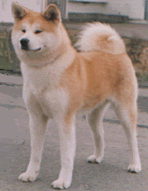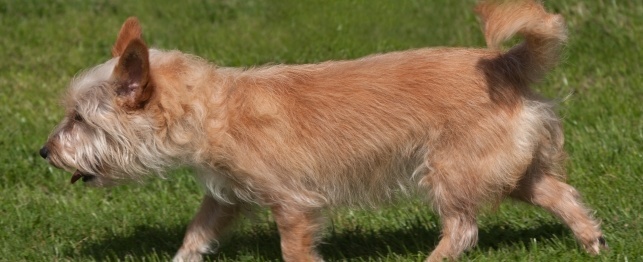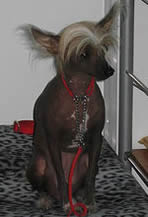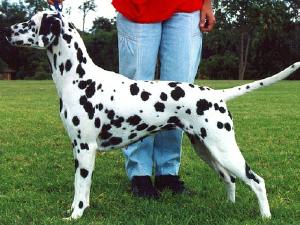
The Akita is the National Dog of Japan, and is considered to be one of its National Monuments. It is the largest of the Japanese Spitzes. It is very muscular, with a solid and powerful frame. The Akita's head is broad, with a short muzzle, triangular eyes, and a shallow groove in the center of the forehead. It has a bushy tail which curls over its back, and webbed paws ideal for swimming. They also have a very thick and waterproof topcoat, lined with a softer undercoat. Interestingly, in Japan, Akitas are revered as symbols of health, and statues of them are given to parents of a newborn. Supposedly, the first person to bring an Akita to the US was Helen Keller.
Life Expectancy:
9-11 years
Energy Level:
Moderate
Living Conditions:
Indoor/Outdoor with yard for play
Barking:
Mild
Exercise Needs:
Yard play and daily 15 minute walk
Breed Group:
Working
Size:
Large
Height:
26 to 28 inches
Weight:
75 to 110 lbs
Standard Hair Colors:
White, red, sesame and brindle; black mask is seen as undesirable for showing
National breed club:
The Akita Club of America
The Akita takes its name from the Akita Region in Japan, where it was first bred. It was first used as an Imperial Guard Dog, before its strength and intelligence were put to use in fighting and hunting. It could bring down a bear, move quickly over deep snow, and had the swimming skills and soft mouth needed to retrieve waterfowl. Because of its strong constitution, it was also used as a sledding dog. Today, the Akita is still used in police and army work, particularly search and rescue missions.
The Akita is a very strong, intelligent, aggressive and loyal dog, making it an ideal guard dog. It is affectionate with its family, and can tolerate the antics of children—however, it may bite if provoked, and may become ferocious if it is not properly trained. It is very curious and can get bored with repetitive teaching techniques, so a varied discipline training program is highly recommended. Highly territorial, the Akita may not be able to get along with other pets, and may attack outright an unfamiliar intruder (even if it happens to be a household guest). It must be supervised when it is with other animals, and kept on a leash when in unfamiliar company.
The Akita needs plenty of exercise and a safely enclosed area where she can run freely.
The Akita is happiest in a large yard, though it can manage in an apartment if it gets moderate but regular exercise. Because of its thick coat, it will be uncomfortable in warm environments.
The Akita’s stiff and short coat needs plenty of brushing, though baths must be minimized because it wears down the natural oils of the coat. It sheds heavily twice a year.
Akitas are very health dogs, but may suffer from hip dysplasia, and nervous and auto immune diseases. Because of their small eye size ingrowing lashes may occur (though this usually corrects itself after puppyhood). There are also cases of dwarfism.
The Akita is not the ideal dog for hot, tropical climates, but if you admire this breed but live in the wrong part of the world, consider a German Shepherd.

 Siberian Huskys: A guide to dogs and puppies of the Siberian Husky breed
The Siberian Husky!
The Siberian Husky is a very strong and
Siberian Huskys: A guide to dogs and puppies of the Siberian Husky breed
The Siberian Husky!
The Siberian Husky is a very strong and
 Choosing a Portuguese Podengo - Portuguese Podengo Breed Profile
Choosing a Portuguese Podengo - Portuguese Po
Choosing a Portuguese Podengo - Portuguese Podengo Breed Profile
Choosing a Portuguese Podengo - Portuguese Po
 Chinese Cresteds: A guide to dogs and puppies of the Chinese Crested breed
The Chinese Crested!
The Chinese Crested is an excellent fa
Chinese Cresteds: A guide to dogs and puppies of the Chinese Crested breed
The Chinese Crested!
The Chinese Crested is an excellent fa
 Dalmatian
Dalmatian
Dalmatian
Dalmatian
 Is a Labrador Retriever Right for You? Survey Results from Lab Owners
Is a Labrador Retriever Right for You? Survey
Is a Labrador Retriever Right for You? Survey Results from Lab Owners
Is a Labrador Retriever Right for You? Survey
Copyright © 2005-2016 Pet Information All Rights Reserved
Contact us: www162date@outlook.com